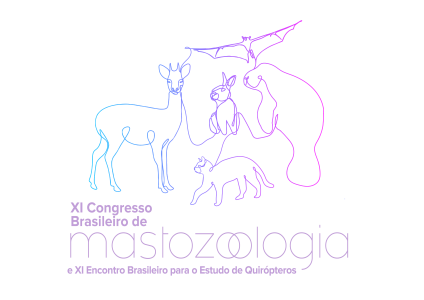Dados do Trabalho
Título:
INTENSE GENOMIC RESHUFFLING IN JULIOMYS OSSITENUIS (RODENTIA, SIGMODONTINAE, WIEDOMYINI) EVIDENCED BY CHROMOSOME PAINTING
Resumo:
The genus Juliomys (Rodentia, Sigmodontinae, Wiedomyini) comprises four species endemic to the Atlantic Forest, with three diploid numbers (2n) of 20, 32 and 36, and three autosomal fundamental numbers (FNa) of 34, 36 and 48. Literature data by classic cytogenetics has suggested that centric and tandem fusions, associated with pericentric inversions were the main forces in the chromosomal evolution of the genus. This study aims to investigate the chromosomal modification events that shaped the extant karyotype. The samples of this study consisted of two males of Juliomys ossitenuis, one from Serra da Bocaina National Park, Paraty municipality and one from Serra dos Órgãos National Park, Teresópolis municipality, both localities are from Rio de Janeiro state, Brazil. Chromosomal preparations were obtained from bone marrow and submitted to G-banding and Fluorescent In Situ Hybridization (FISH) with 24 whole chromosome probes (pairs 1 – 26, and X chromosome) from Hylaeamys megacephalus (HME). Juliomys ossitenuis (JOS) has a 2n=20/FNa=36 karyotype. The autosomal set consists of 9 metacentric pairs (1-9); the X chromosome is a large submetacentric, and the Y chromosome is a small acrocentric. Cross-species FISH with HME probes shows 39 hybridization signals in JOS; all autosomal pairs show hybridization signals to multiple HME probes. Comparative chromosome painting analysis were made with karyotypes from 22 Sigmodontinae taxa analyzed elsewhere using the same set of probes, from tribes Akodontini (5 spp.), Oryzomyini (15 spp.) and Thomasomyini (2 spp.), with range in 2n from 10 to 72 and FNa from 14 to 84. Contrary to tribes Akodontini, Oryzomyini and Thomasomyini taxa, that exhibited fusion/fission rearrangements as the main events on its chromosomal evolution with mostly syntenic blocks as independent chromosomes, JOS (Wiedomyini) has undergone several rearrangements, such as fusion/fission, pericentric inversions and multiple translocations, since the autosomal pairs are formed from three to five syntenic blocks. This indicates that the chromosomal evolution of this taxa was complex and with an intense genomic reshuffling.
Keywords: Chromosome evolution. Sigmodontinae. FISH. Chromosome painting. Biodiversity. Rodents.
Financiamento:
Área
Genética
Autores
Willam Oliveira da Silva, Gabriel Batista Borges, Malcolm Andrew Ferguson-Smith, Patricia Caroline Mary O'Brien, Lena Geise, Julio Cesar Pieczarka, Cleusa Yoshiko Nagamachi
